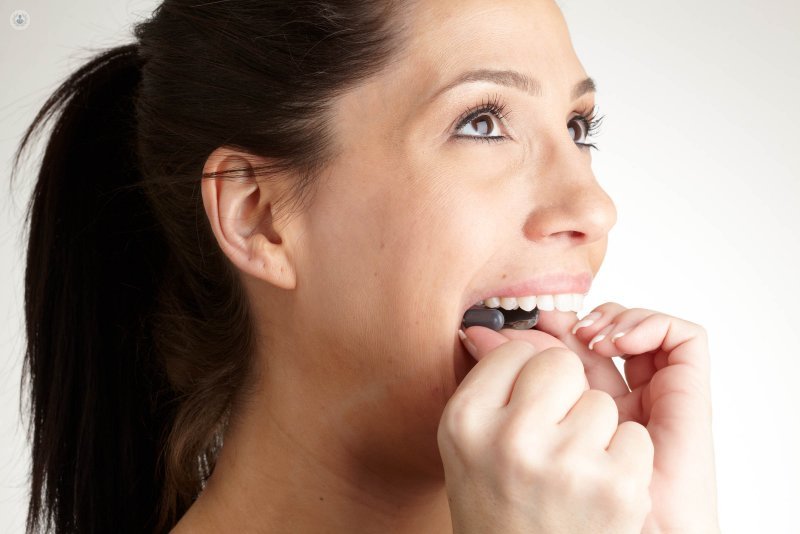dental prosthesis know the different types and uses
Written by:A dental prosthesis rehabilitate oral function allows affected after the loss of a tooth. Among skeletal removable devices, resin or fixed bridges are while dental implants are called fixed prostheses. It is important to replace the absence of tooth as soon as possible, so that not altered occlusal balance of the entire mouth.

Denture: What They Are
The word comes from the Latin prothesis. According to the definition of the SAR, is the process by which it is repaired, artificially, the lack of an organ or part of it, like a tooth, an eye, etc.. to improve some of its functions, or for aesthetic purposes.
Dental, meanwhile, refers to Pertaining to the teeth. We understand from here that a dental prosthesis is the action by which affected rehabilitate oral function after the loss of a tooth. However, it can also be done in cases where it has not lost any teeth, to improve some of oral functions, or for aesthetic purposes.
In any case, if we lost teeth we should remedy as soon as possible. Eating only one side can cause problems not only working doubly teeth, but also the jaw joints that remain unused, as well.
Types of dentures and differences
According to the characteristics of the patient, you can opt for a fixed or removable rehabilitation, both one-piece, several, or even all parts.Missing teeth can be replaced with implants, which would be the closest thing to a new tooth in our mouth, or other types of prostheses: fixed or removable, which left parts are secured.
Today, there are different options within the old dentures ( "removable"), according to the needs of each patient:- Skeletal apparatus. They have metal base and perfectly fit with the remaining teeth. They have a very fine structure and are comfortable to wear.- Apparatus resin. Sealed with the oral mucosa and the bone of the patient support.There is also a fixed bridge, consisting of porcelain crowns or metal-porcelain. Its function is to restore teeth fixed and aesthetic way, for what is needed, at least two teeth pillars, one anterior and posterior, which will support the crowns of the pieces that are missing.
Moreover, a dental implant consists of a titanium bolt through minor surgery, it is placed in the bone and an implant-supported prosthesis, which is placed after the integration of the implant and bone. With a single implant you can replace a tooth, but on several implants can be placed up to a full denture, with much more stability and support it on the gum only.
Advantages and disadvantages of each dental prosthesis
It should seek advice from your dentist , which is the only place capable, professional review and adjust the prosthesis. Each case must be studied according to the needs and possibilities of each individual.
A toothless patient problems: the need to meet with dental prosthesis
The absence of a tooth must be supplied as soon as possible so that not altered occlusal balance of the entire mouth, deterring oral functions and possible subsequent rehabilitation.
We found changes in many aspects, but we highlight the following:• phonation problems, ie speech. There are some sounds that are altered, having made difficult pronunciation.• Digestive problems for poor chewing, crushing poor food, forcing the stomach to perform the part of digestion begins in the oral cavity.• overload of the remaining teeth left in his mouth, increasing wear and also causing an overload gum level, not to be protected by the missing tooth.• Bone loss, since, having no function bone surrounding the missing tooth, it is atrophying and lower, narrow staying with the passage of time. This fact is very important because if we spend a lot of time between extraction and rehabilitation, proper placement of dental implants and crowns aesthetics difficult.• Collapse of the area, as the adjacent teeth are displaced by the tendency to occupy the empty space. Appear, for this cause, interproximal tooth decay and gum problems in teeth that were healthy.
Maintenance and overhaul of dentures
For a dental prosthesis is securely collaboration both the dentist and the patient is required. The specialist will be responsible for doing things right during the procedure, but after implant placement, the patient will be who shall comply with the advice Dentist. It will be especially important to follow careful hygiene.
You must go to the dentist for review of dentures. The dentist will check that they work properly, you have not moved or moved from place and have not been damaged oral tissues. Normally, the first review is usually one week after placement and then, depending on the specialist, one during the first and third month after. After this, it is normal only be performed each year.
Removable dentures usually need periodically filled (every 3-4 years), due to decreased bone height. However, this frequency is given by the patient and the use and care has been taken to the prosthesis.



